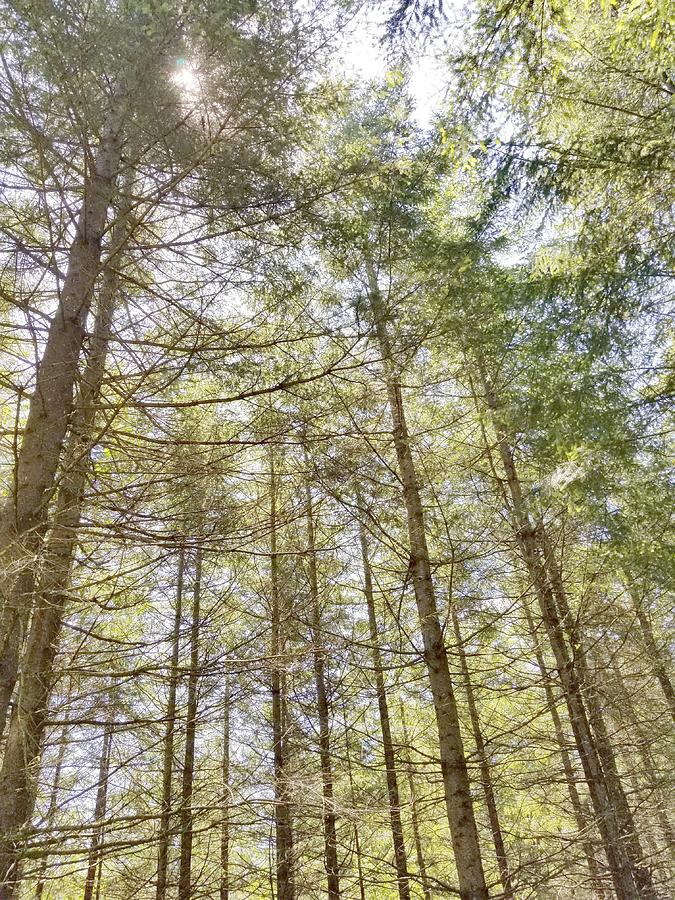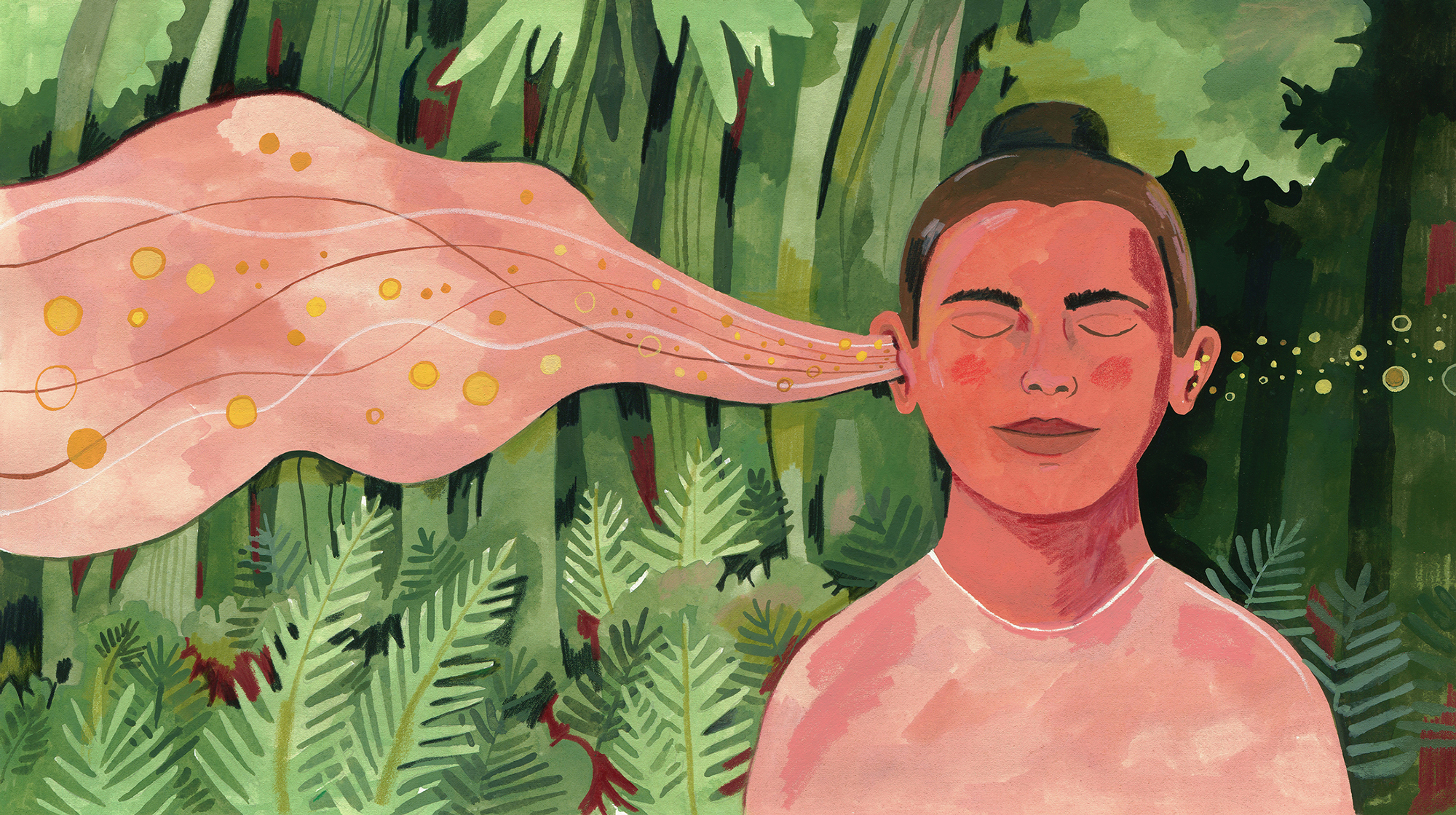Rocks Are Quiet Because The Trees Are Listening: Understanding The Whispering Connection
Mar 21 2025
Have you ever wondered why rocks seem so calm and still? The answer lies in a fascinating relationship between rocks and trees, where the trees act as silent listeners to the earth's secrets. This phenomenon, often described as "rocks are quiet because the trees are listening," reveals a deeper connection between the natural world and its intricate systems of communication. By exploring this concept, we can gain a greater appreciation for the balance and harmony that exist in nature.
The phrase "rocks are quiet because the trees are listening" serves as a poetic reminder of the interconnectedness of all things. Rocks, often seen as lifeless and unchanging, are actually part of a dynamic ecosystem that thrives on balance and cooperation. Trees, on the other hand, play an active role in maintaining this balance by interacting with the environment in ways we may not fully understand.
As we delve deeper into this topic, we will explore the science behind this phenomenon, its implications for the environment, and how it can inspire us to live more harmoniously with nature. This article will cover various aspects of the relationship between rocks and trees, including their roles in ecosystems, the communication networks they create, and the lessons we can learn from them.
Read also:Discover The Allure Of Diva Flawless Your Ultimate Guide To Radiant Beauty
Table of Contents
- The Biological Connection Between Rocks and Trees
- Roles of Rocks and Trees in Ecosystems
- How Trees Communicate with Rocks
- Scientific Insights into the Phenomenon
- Environmental Impact of the Relationship
- Human Connection to Rocks and Trees
- The Spiritual Meaning of Rocks and Trees
- Long-Term Effects of the Relationship
- Sustainability and Conservation Efforts
- Future Perspectives and Research Opportunities
The Biological Connection Between Rocks and Trees
Rocks and trees may seem worlds apart, but they share a biological connection that is both profound and essential. Rocks provide the foundation for soil formation, which is crucial for tree growth. Through weathering processes, rocks break down into smaller particles, creating nutrient-rich soil that supports the development of plant life, including trees.
Weathering Processes
Weathering is the natural breakdown of rocks into smaller fragments through physical, chemical, and biological processes. These processes contribute to the creation of soil, which is vital for the growth of trees. Over time, rocks release essential minerals such as potassium, calcium, and magnesium, which are absorbed by tree roots.
Nutrient Cycling
Trees play a significant role in nutrient cycling by extracting minerals from the soil and returning them through leaf litter and root decay. This cycle ensures that nutrients are continuously replenished, maintaining the health of the ecosystem. The interdependence between rocks and trees highlights the importance of their relationship in sustaining life on Earth.
Roles of Rocks and Trees in Ecosystems
In ecosystems, rocks and trees perform distinct but complementary roles. Rocks serve as the structural foundation, while trees act as the living organisms that interact with the environment and support biodiversity.
Rocks as Ecosystem Anchors
Rocks provide stability to ecosystems by anchoring soil and preventing erosion. They also influence water flow and storage, which is critical for plant and animal survival. In mountainous regions, rocks create microhabitats that support unique plant and animal species.
Trees as Biodiversity Hubs
Trees are biodiversity hubs that support a wide range of species, from microorganisms to large mammals. They offer food, shelter, and breeding grounds for countless organisms. Additionally, trees contribute to climate regulation by absorbing carbon dioxide and releasing oxygen, making them essential for maintaining a healthy atmosphere.
Read also:Fry99 The Ultimate Guide To Understanding And Mastering This Trending Topic
How Trees Communicate with Rocks
Although rocks cannot communicate in the traditional sense, they interact with trees through chemical and physical means. Trees "listen" to rocks by detecting changes in soil composition, moisture levels, and nutrient availability. This interaction allows trees to adapt to their environment and thrive in diverse conditions.
Root Sensitivity
Tree roots are highly sensitive to environmental changes, including those caused by rock weathering. By detecting variations in soil chemistry, roots can adjust their growth patterns to optimize nutrient uptake. This sensitivity enables trees to thrive even in challenging environments.
Soil Microbes as Mediators
Soil microbes act as mediators in the communication between rocks and trees. These microorganisms break down organic matter and minerals, making them available for tree roots to absorb. In return, trees release sugars and other compounds that nourish the microbial community, creating a symbiotic relationship.
Scientific Insights into the Phenomenon
Scientific research has shed light on the intricate relationship between rocks and trees, revealing how they contribute to ecosystem health. Studies have shown that the interaction between rocks and trees is more complex than previously thought, involving multiple processes and feedback loops.
Soil Formation Studies
Research on soil formation has demonstrated the importance of rock weathering in creating fertile soils. Studies conducted in various regions have shown that different types of rocks contribute unique minerals to the soil, influencing the types of trees that can grow in specific areas.
Tree Adaptation Mechanisms
Scientists have identified several mechanisms by which trees adapt to their rocky environments. These include root morphology, nutrient uptake strategies, and stress tolerance. Understanding these mechanisms can help inform conservation efforts and improve reforestation practices.
Environmental Impact of the Relationship
The relationship between rocks and trees has significant environmental implications. By supporting biodiversity and regulating climate, this relationship plays a crucial role in maintaining the health of ecosystems. However, human activities such as deforestation and mining can disrupt this balance, leading to negative consequences for the environment.
Deforestation Effects
Deforestation removes trees, which can lead to soil degradation and increased erosion. Without trees to anchor the soil, rocks may be washed away, reducing the fertility of the land and making it less suitable for plant growth.
Mining and Quarrying
Mining and quarrying activities extract rocks from the Earth's surface, disrupting ecosystems and altering natural processes. These activities can lead to habitat destruction, loss of biodiversity, and long-term environmental damage.
Human Connection to Rocks and Trees
Humans have long been connected to rocks and trees, both culturally and practically. From using rocks as building materials to relying on trees for food and shelter, these natural elements have played a vital role in human history and development.
Cultural Significance
In many cultures, rocks and trees hold spiritual and symbolic meanings. They are often associated with strength, endurance, and wisdom. Stories and traditions passed down through generations highlight the importance of these natural elements in shaping human identity and values.
Practical Uses
Rocks and trees have numerous practical applications in modern society. Rocks are used in construction, landscaping, and industrial processes, while trees provide timber, paper, and other products. Additionally, trees contribute to air quality and climate regulation, making them essential for human well-being.
The Spiritual Meaning of Rocks and Trees
Beyond their practical uses, rocks and trees hold deep spiritual significance for many people. They are often seen as symbols of connection, balance, and harmony. The phrase "rocks are quiet because the trees are listening" encapsulates this spiritual meaning, reminding us of the interconnectedness of all things.
Symbolism in Religion
In many religions, rocks and trees are revered as sacred symbols. They represent stability, growth, and renewal, serving as reminders of the divine presence in nature. By meditating on the relationship between rocks and trees, individuals can gain a deeper understanding of their place in the universe.
Mindfulness Practices
Mindfulness practices often incorporate elements of nature, including rocks and trees, to promote relaxation and self-awareness. By focusing on these natural elements, individuals can cultivate a sense of peace and connection with the world around them.
Long-Term Effects of the Relationship
The relationship between rocks and trees has long-term effects on ecosystems and the environment. By supporting biodiversity and regulating climate, this relationship contributes to the sustainability of life on Earth. However, ongoing human activities threaten to disrupt this balance, highlighting the need for conservation and restoration efforts.
Ecosystem Resilience
Ecosystems that include both rocks and trees tend to be more resilient to environmental changes. The presence of rocks provides stability, while trees contribute to climate regulation and biodiversity. Together, they create a dynamic system that can adapt to changing conditions over time.
Climate Regulation
Trees play a critical role in climate regulation by absorbing carbon dioxide and releasing oxygen. This process helps mitigate the effects of climate change and supports the health of the planet. By maintaining the relationship between rocks and trees, we can ensure a more sustainable future for all living beings.
Sustainability and Conservation Efforts
Conservation efforts aimed at protecting rocks and trees are essential for maintaining ecosystem health and promoting sustainability. By implementing sustainable practices and supporting conservation initiatives, individuals and communities can help preserve the delicate balance between these natural elements.
Reforestation Projects
Reforestation projects aim to restore tree populations in areas affected by deforestation or natural disasters. These projects often involve planting native species that are well-adapted to local conditions, ensuring long-term success and ecosystem health.
Rock Conservation
Rock conservation efforts focus on protecting geological formations and preventing habitat destruction. By preserving these natural features, we can maintain the integrity of ecosystems and support the biodiversity they sustain.
Future Perspectives and Research Opportunities
As our understanding of the relationship between rocks and trees continues to evolve, new research opportunities and future perspectives emerge. By exploring these possibilities, we can gain a deeper appreciation for the complexity and beauty of the natural world.
Technological Advances
Advances in technology, such as remote sensing and genetic engineering, offer new ways to study the relationship between rocks and trees. These tools can provide valuable insights into ecosystem dynamics and inform conservation strategies.
Collaborative Research
Collaborative research efforts involving scientists, policymakers, and local communities can lead to innovative solutions for preserving the relationship between rocks and trees. By working together, we can ensure a sustainable future for all living beings.
Kesimpulan
In conclusion, the phrase "rocks are quiet because the trees are listening" encapsulates the profound relationship between these two natural elements. By understanding the biological, ecological, and spiritual connections between rocks and trees, we can appreciate their importance in maintaining ecosystem health and promoting sustainability. As individuals and communities, we have a responsibility to protect and preserve this delicate balance for future generations.
We invite you to take action by supporting conservation efforts, participating in reforestation projects, and spreading awareness about the importance of rocks and trees. Share this article with your friends and family, and explore other resources on our website to learn more about the fascinating world of nature. Together, we can make a difference in preserving the beauty and balance of our planet.


